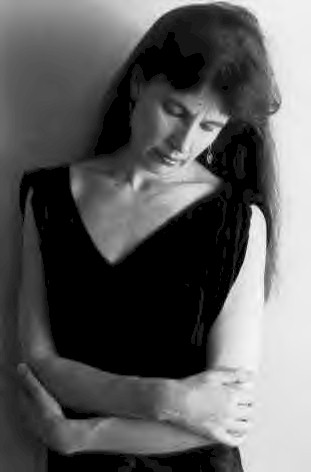|
J.
S. Bach, Toccatas
Katharine
Durran, piano
Duration:
1.05’19’’
Metier
Records
MSV
CD2001
When
I received this CD, I must admit I'd never heard of Katharine Durran, and the
music too, the Toccatas of Bach, were only vaguely known to me. They are not
often heard today, which is a pity for the breadth and freedom of Bach's musical
thought is inspirational, as is the sheer delight of the virtuosic,
improvisatory character of these beautiful pieces. They are entertaining without
being superficial, and free without being pointless and shambolic; in the
Toccatas, Bach allows his imagination to roam free while at the same time his
intellect retains full structural control: there is no hint, at least to my
ears, of any disunity. In a recent television interview, Alfred Brendel has
defined the masterpiece as a piece "which combines the incombineable",
and while I have one or two reservations about that idea, I can certainly see
what he means, and by that definition the Toccatas are indeed masterpieces in
their own right.
 Performing
them presents many problems. The juxtaposition of ideas sometimes diametrically
opposed within a single piece requires very sharp musical reflexes, and the
emotional range of the pieces is enormous. They strike the listener as being
composed of a series of musical sections, or movements, which oscillate between
free passages - often pathetic - and stricter contrapuntal or fugal sections,
contrasts which require careful handling. Performing
them presents many problems. The juxtaposition of ideas sometimes diametrically
opposed within a single piece requires very sharp musical reflexes, and the
emotional range of the pieces is enormous. They strike the listener as being
composed of a series of musical sections, or movements, which oscillate between
free passages - often pathetic - and stricter contrapuntal or fugal sections,
contrasts which require careful handling.
Katharine Durran belongs to a modern tradition of piano playing in which
virtuosity and emotional involvement are combined with careful attention to
musical form and style. Her approach is not overtly retrospective, but she
manages to combine a sense of historical awareness and clarity with real
musicality and panache, leaving one with a feeling that they are being performed
for the present. Her sound is aesthetically pleasing - a bit warm compared to
Angela Hewitt's for example, although the contrast may be exaggerated by the
warmth of the recorded sound (Hewitt's, and indeed many other modern piano
recordings, are generally thinner and brighter). She gives the impression
throughout of having absorbed the music completely, and her obvious affinity for
the works and her intellectual mastery of their structure produce superb
performances, characterised by clarity, style, and responsiveness. Her unforced,
natural artistry and dynamic pianism place this performance in the first rank,
and listening enjoyment is further enhanced by clever programming. At first I
wondered why she hadn't used the two major pieces to split up the five in minor
keys, but that was before I'd played the CD, and it all made perfect sense when
I heard it. The CD opens with the brooding D minor piece, and at the end the
wonderful D major toccata refreshes our spirits before the pianist leaves in a
blaze of glory in a stunning final section of great vivacity.
I was struck with this recording, unlike some other modern Bach performances, by
how atmospheric the music could be. There is no trace of sentimentality or
excessive use of colour, and yet the atmosphere evoked by, for example, the
opening section of the G minor piece is standard setting. Subtle shadin g
is used throughout to enhance the musical feel of the piece; moreover, one gets
the feeling that the artist is conveying the musical delight and - for the want
of a better term - the musical potential energy of the work. Control and sage
tempi characterise her performance of the touching F sharp minor Toccata; the
clarity and careful shaping of the fugal section of this piece is particularly
impressive, but again, erudition and technique are deployed in a highly enjoyable
manner. The more emotionally negative C minor is given a sympathetic and
wonderfully stylish performance,
the slow opening section sounding tearful and genuine, while the bitter-sweet
characteristics of
the final polyphonic section are communicated beautifully. The two major pieces
are a delight; they are immediately likable, and Katharine Durran's performance
of the final piece on the disc, the D major, in nothing short of inspirational.
Its jubilant and infectious opening section, full of witty ornamentation and
chord changes, leads on to a characteristically introspective inner section, and
finally to a vivacious final 'hunting' movement, in which
some stunning piano playing is on display. I suppose it's a bit superficial
compared to the others, but nonetheless hugely enjoyable! g
is used throughout to enhance the musical feel of the piece; moreover, one gets
the feeling that the artist is conveying the musical delight and - for the want
of a better term - the musical potential energy of the work. Control and sage
tempi characterise her performance of the touching F sharp minor Toccata; the
clarity and careful shaping of the fugal section of this piece is particularly
impressive, but again, erudition and technique are deployed in a highly enjoyable
manner. The more emotionally negative C minor is given a sympathetic and
wonderfully stylish performance,
the slow opening section sounding tearful and genuine, while the bitter-sweet
characteristics of
the final polyphonic section are communicated beautifully. The two major pieces
are a delight; they are immediately likable, and Katharine Durran's performance
of the final piece on the disc, the D major, in nothing short of inspirational.
Its jubilant and infectious opening section, full of witty ornamentation and
chord changes, leads on to a characteristically introspective inner section, and
finally to a vivacious final 'hunting' movement, in which
some stunning piano playing is on display. I suppose it's a bit superficial
compared to the others, but nonetheless hugely enjoyable!
All in all, this is a wonderful disc, introducing a Bach pianist of rare insight
and musicality. A recording of the Goldberg variations is planned, and if you've
heard this, you'll almost certainly be looking forward to hearing that. The
recording, made at St. George's, Bristol, is superbly engineered to audiophile
standards.
The Editor
5
February 2001
Top |

 Performing
them presents many problems. The juxtaposition of ideas sometimes diametrically
opposed within a single piece requires very sharp musical reflexes, and the
emotional range of the pieces is enormous. They strike the listener as being
composed of a series of musical sections, or movements, which oscillate between
free passages - often pathetic - and stricter contrapuntal or fugal sections,
contrasts which require careful handling.
Performing
them presents many problems. The juxtaposition of ideas sometimes diametrically
opposed within a single piece requires very sharp musical reflexes, and the
emotional range of the pieces is enormous. They strike the listener as being
composed of a series of musical sections, or movements, which oscillate between
free passages - often pathetic - and stricter contrapuntal or fugal sections,
contrasts which require careful handling. g
is used throughout to enhance the musical feel of the piece; moreover, one gets
the feeling that the artist is conveying the musical delight and - for the want
of a better term - the musical potential energy of the work. Control and sage
tempi characterise her performance of the touching F sharp minor Toccata; the
clarity and careful shaping of the fugal section of this piece is particularly
impressive, but again, erudition and technique are deployed in a highly
g
is used throughout to enhance the musical feel of the piece; moreover, one gets
the feeling that the artist is conveying the musical delight and - for the want
of a better term - the musical potential energy of the work. Control and sage
tempi characterise her performance of the touching F sharp minor Toccata; the
clarity and careful shaping of the fugal section of this piece is particularly
impressive, but again, erudition and technique are deployed in a highly